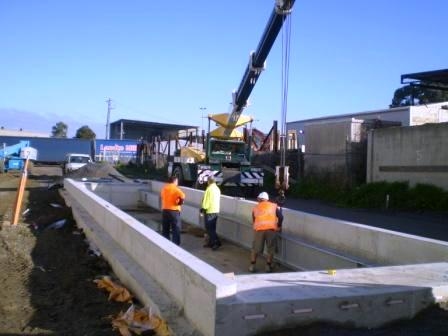Different types of weighbridges explained
If you’re planning on buying or hiring a weighbridge, the following synopsis of each of the different types of weighbridge may be helpful.
There are many different types of weighbridge available and your choice will depend on many different factors including cost, available space, ground conditions, access, need for portability, frequency of use and purpose (trade or non-trade). If you’re planning a trade weighbridge, it is important to be aware of the legal requirements involved and take these into consideration when choosing a site.
Weighbridges are broadly classified into two categories, namely above-ground and in-ground. In-ground weighbridges are divided into semi-pit weighbridges (those which have side walls which act as retaining walls and which have a level weighing surface) and fully in-ground weighbridges (where the weighing surface is completely level with the surrounding ground).
Here’s a brief overview of all the different types of weighbridge.
Above ground weighbridges
Above-ground weighbridges are the most common due to their cost-effectiveness plus they require the least amount of site preparation. However, they do require the most surface area. Entry and exit ramps have to be at least 5m in length and the ‘clear-spaces’ along both sides of the weighbridge deck have to be at least a metre.
This type of weighbridge can be supplied in single deck, twin deck or multi-deck configuration depending on the length of the vehicles that need to be weighed.
Semi-pit weighbridge
These ground-level weighbridges come in standard and custom configurations and can be multi-deck, twin deck or single deck, depending on the specific needs.
No ramps are required which makes them a cost-effective option, but some civil works are necessary (excavation, drainage pipes or sumps etc). Semi-pit weighbridges have side walls that act as retaining walls and these have to be located at least a metre from the side of the deck. Additional reinforcement of the retaining walls may be required.
Custom semi-pit weighbridge
These are generally installed where site limitations are a factor (width constraints, existing buildings adjacent to one or both sides of the weighbridge, bypass roads adjacent to one or both sides). This design is basically a variation to the typical semi-pit design where the modifications are required to accommodate the site limitations.
Where the width of one or both of the side walls is decreased and where access to some loadcells is restricted or prevented, access holes have to be installed in the deck or the side wall adjacent to the affected loadcells to facilitate servicing and maintenance.
Fully in-ground weighbridge

In-ground weighbridge installation
This type has the smallest footprint of all the options and is ideal for sites where there are extreme space restrictions. They’re also ideal for shared weighing and traffic areas and where vehicles are weighed during loading by forklifts. However, they require extensive site preparation, excavation and reinforcing, making them the most expensive option.
The weighing surface of fully in-ground weighbridges is completely level with the surrounding ground and access to the load cells is through holes in the deck or side of the deck. They are generally classified as ‘confined spaces’ and as such, require specialist intervention for maintenance and servicing.
Multiple deck weighbridge
These can be constructed as above-ground, semi-pit or fully in-ground weighbridges, so they are really more of a variation of a design than a specific type.
The number and length of decks depend on requirements and decks can be varying lengths.
With multiple deck weighbridges, individual axles or axle groups can be weighed simultaneously, making them ideal for use in stations where the primary function is to record axle breakdown weights.
Portable weighbridges
Portable or relocatable weighbridges are a cost-effective option, particularly for both non-trade operations and for those sites that will only be used temporarily (less than two years).
They’re essentially a variation on the design of an above-ground weighbridge, and use rectangular concrete slabs for the load-bearing locations and a removable frame as a rigid support base for the loadcells and deck. The deck can either be made entirely from steel (the lightweight construction is ideal for relocation purposes) or from the more typical combination of steel and concrete. Vehicles access the deck via ramps constructed from earth.
If the portable weighbridge is to be used for trade purposes, concrete end walls have to be constructed.
A weighbridge can be a significant investment and with so many different factors to consider, it’s worth getting expert advice ahead of any final decision. UltraHawke, the largest supplier of weighbridges in Australia, would be very happy to discuss all the options with you and make recommendations to suit your requirements and budget. They have a wide range of weighbridges for sale and for hire and you can find them on 03 9357 7470 or via their website, www.ultrahawke.com.au.
{{ commodity.name }}
{{ post.title }}
{{ post.date }}



Comments